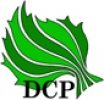Viruses
Introduction and context
The Diagnostic Centre for Plants’ (DCP) virology lab, the youngest DCP laboratory has seen a steady increase in virus, viroid and phytoplasma diagnostics and related disease problem consultancies. Many specific protocols to detect viruses by means of serological tests have already been implemented. Additionally, a large number of (RT-)PCR based tests have also been validated and implemented for detection of plant pathogenic viruses and related organisms.
Future priorities include optimization (or when required development of new tests) and validation of the different detection and identification techniques for the (economically) most important viroids, viruses, phytoplasmas and Candidatus Liberibacter spp.
The virology lab has an ISO17025 accreditation for the detection of plant pathogenic viruses by means of the DAS- and TAS-ELISA technique and the real-time PCR confirmation tests for the detection of Tomato yellow leaf curl virus (TYLCV) and Plum pox virus (PPV). Commissioned by the Federal Agency for the Safety of the Food Chain (FASFC), this laboratory performs the official tests in response to national investigative actions and/or import and export control actions on plants and their derivatives for the diagnostic tests under accreditation. Additionally, the lab also has an official recognition for the detection of plants that are potentially infected by Chrysanthemum stem necrosis virus (CSNV), Chrysanthemum stunt viroid (CSVd), apple proliferation and pear decline phytoplasmas.
For certification of seed potatoes, direct PCR-based techniques were implemented to detect the main potato viruses (PVY, PVX, PLRV, PVS, PVA, PVM). This technique was officially approved a few years ago for use on seed potato tubers in the certification scheme.
 |
| Virus symptoms – from left to right - on Chrysanthemum TSWV (Tomato spotted wilt virus) ; ORSV (Odontoglossum ringspot virus) on Phalaenopsis; WMV (Watermelon mosaic virus) on zuchini (whole plant) – CMV (Cucumber mosaic virus) on zuchini fruit |
Diagnostic procedure
The virology lab of the DCP can detect the most common viruses and phytoplasmas. Most commonly used specific diagnostic tests are protein based (Enzyme-linked Immunosorbent Assay, ELISA) or nucleic acid based (Polymerase Chain Reaction, PCR). Every diagnostic procedure aiming to identify the causal agent of plant damage potentially caused by viruses or virus-like diseases starts with a visual inspection. On the basis of the symptoms, if a viral disease is suspected, one or more serological assays (ELISA) and/or PCR tests are performed. When appropriate, or when the observed symptoms do not have a direct link with a specific virus, inoculation of the suspected virus-infected tissue on indicator plants (known to develop a specific reaction to mechanically transmitted viruses) can be used. This is called a “bio-assay”.
 |
| Output examples of the most common diagnostic tests in plant virology – from left to right - color change due to binding of enzyme-labeled antibodies on the protein coat of the virus (ELISA), visualization of DNA fragments through (capillary) electrophoresis ((RT-) PCR), amplification curves showing fluorescence intensity in relation to the number of PCR cycles (real-time (RT-)PCR) and interpretation of symptom formation on mechanically infected indicator plants (bio-assay). |
 Diagnostic Centre for Plants
Diagnostic Centre for Plants